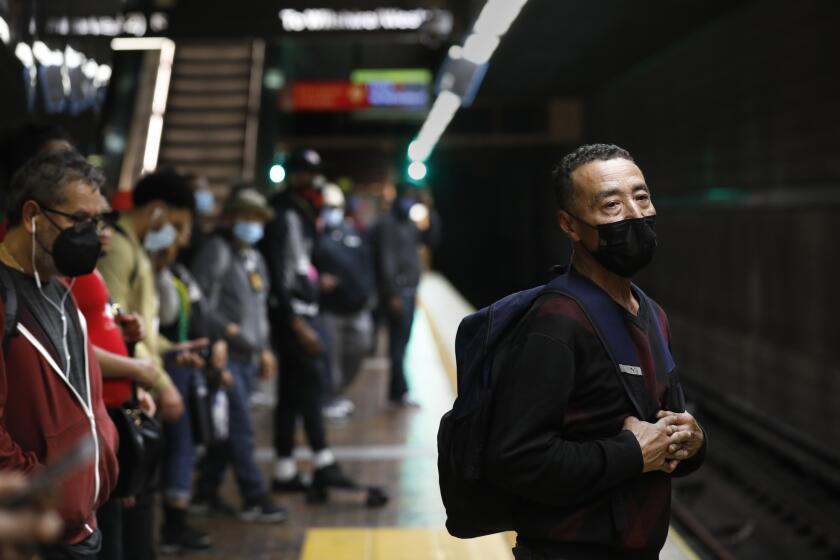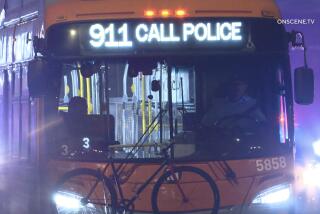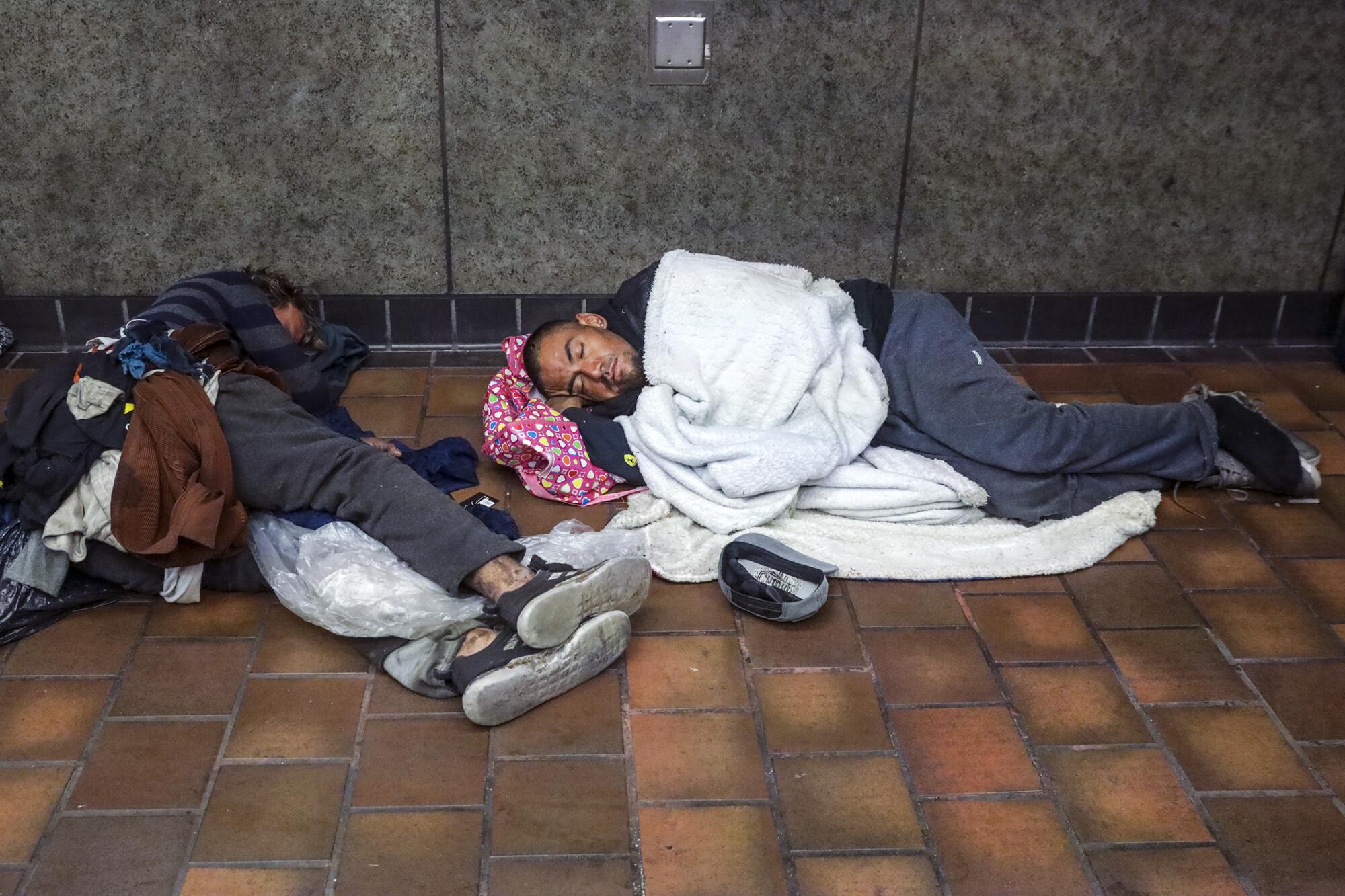
- Share via
At the entrance to a downtown subway station, Tracy Hellams sits on the ground burning the hanging threads on her jeans with a lighter to kill time. It is 3 a.m., and she and nearly a dozen other homeless people linger in the subterranean vestibule, waiting for the gates to open and the first trains to come.
Hellams has had a chaotic life ever since she was 11 years old and her mom died, leaving her to bounce around foster homes in Orange County. At 54, she struggles with mental illness and addiction to crack and alcohol. She hears voices and doesn’t want to be near other drug users who might “trigger” her.
The trains are her refuge.
“I have been on the trains for four to six years,” she said. “I feel safer on the train.”
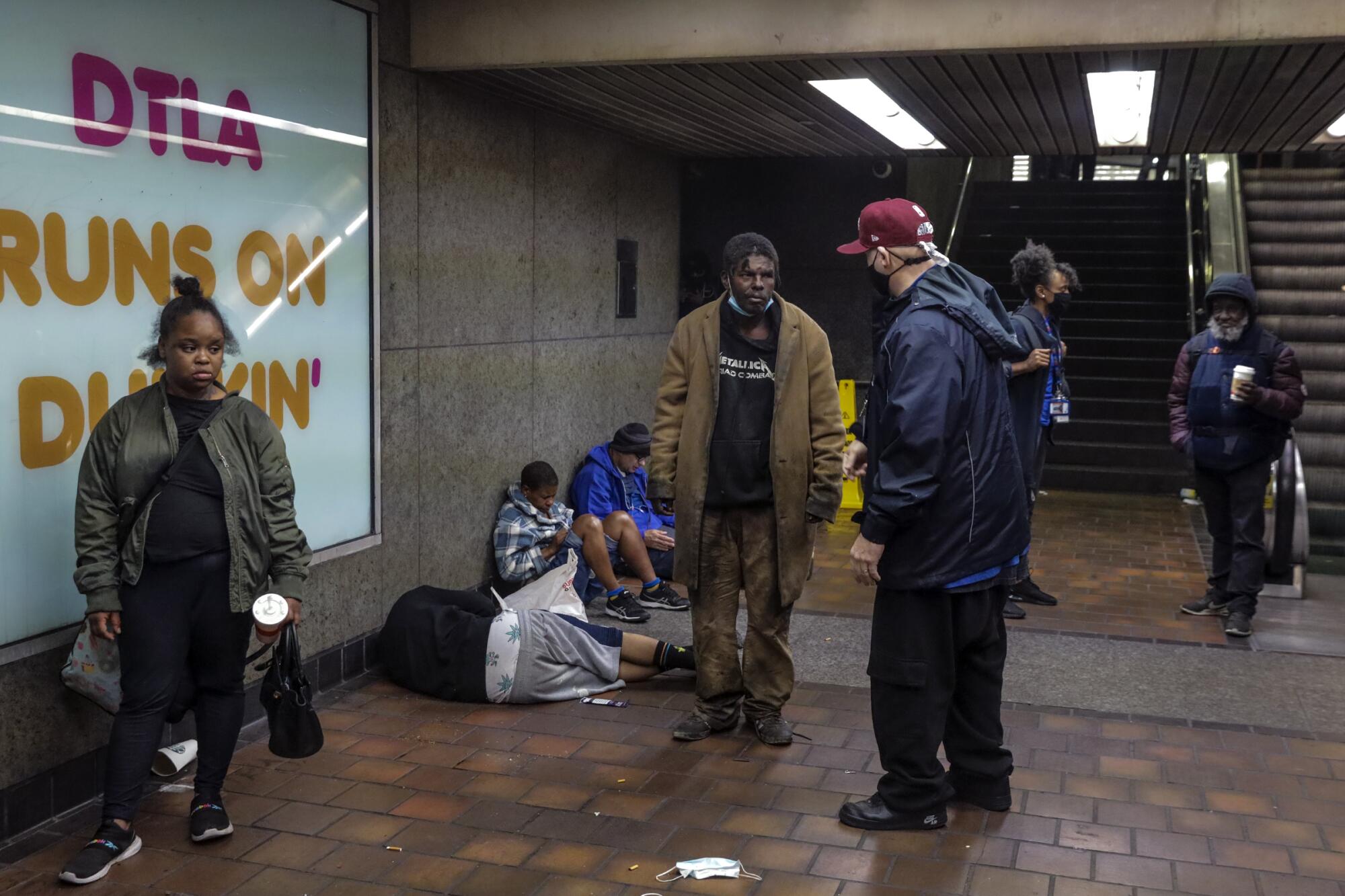
Unhoused residents have long found shelter in the quiet, climate-controlled confines of the Metropolitan Transportation Authority system, sleeping in stations and on trains and buses. But their numbers have exploded in recent years — along with those of the general homeless population — unnerving some commuters and hindering the agency’s efforts to boost ridership figures that tanked during the pandemic.
Like libraries and parks, Metro has found itself thrust into the heart of the region’s homelessness crisis, forced to become a de facto social services agency of its own. In 2018, it launched the first of its kind outreach initiative to find and offer shelter to homeless riders. The program began as a $1.2-million project and has mushroomed into a $27.5-million initiative that includes an 80-bed shelter and dozens of outreach workers.
“I was trying to get him to give me a room by myself, because I like to do my art. I am also a poet.”
— Tracy Hellams
But the problem just keeps growing. There are hundreds of encampments on or near Metro-owned property, facilities, and rights-of-way. The agency counted 5,700 homeless riders on their system in August.
Steve Fiechter, a director with Metro’s outreach program run by People Assisting the Homeless, or PATH, said the homeless riders are often more isolated and have more serious behavioral issues than those living in encampments on the streets. Riders complain about harassment and disturbing outbursts, about soiled seats and elevators reeking of urine. So do Metro’s own employees, who want the agency to get tough on removing homeless people from the system, according to its own surveys.
Some officials fear the situation is preventing a rebound in ridership at a time record-high gas prices might otherwise lure commuters into mass transit.
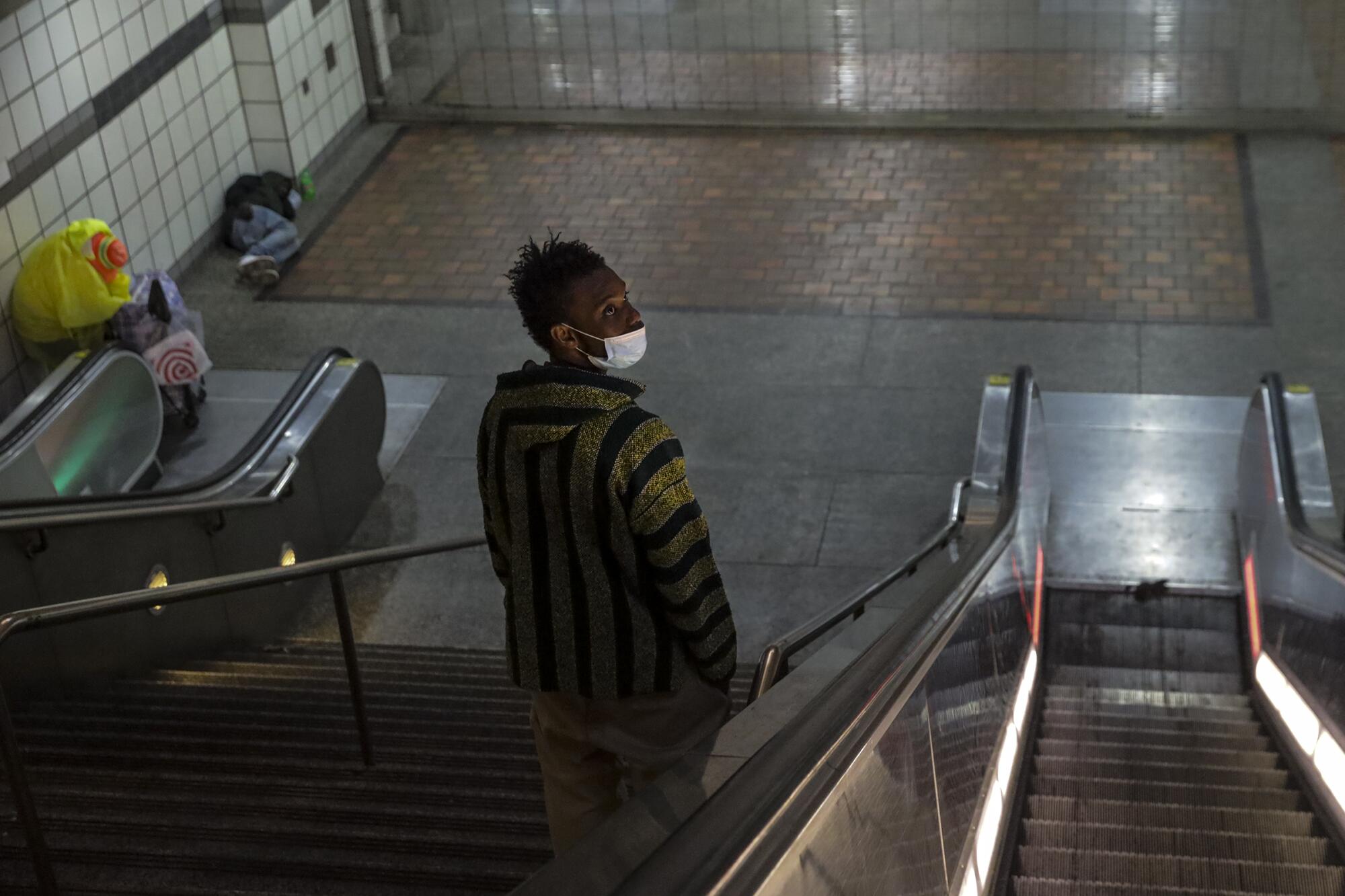
At the 7th Street Metro Center where dozens of homeless people have been sleeping in recent months, social workers were trying to convince Hellams to accept a shelter bed in the predawn hours of a recent Tuesday. She could get in a bed tonight, they told her. Throughout the night, they succeeded in ferrying seven people in Ubers to the agency’s shelter in South Los Angeles.
But Hellams was reluctant. She didn’t want to be stuck in a communal room with others at a shelter.
Gasoline prices have reached record highs in Los Angeles, but convincing tens of thousands of Angelenos to leave their gas guzzlers at home is still a hard sell for many.
“I was trying to get him to give me a room by myself, because I like to do my art. I am also a poet,” she said.
Metro is not the only transportation agency nationally that has seen the number of homeless people on their system rise during the pandemic as shelters closed and commuters stayed home, according to a study released by UCLA’s Institute of Transportation Studies.
“It’s a big dilemma,” said Anastasia Loukaitou-Sideris, the lead author and professor of urban planning at UCLA. “The agencies to a certain extent, and rightly so, feel that they are in a transportation business, and they have to deal with a challenge that is not of their own making.”
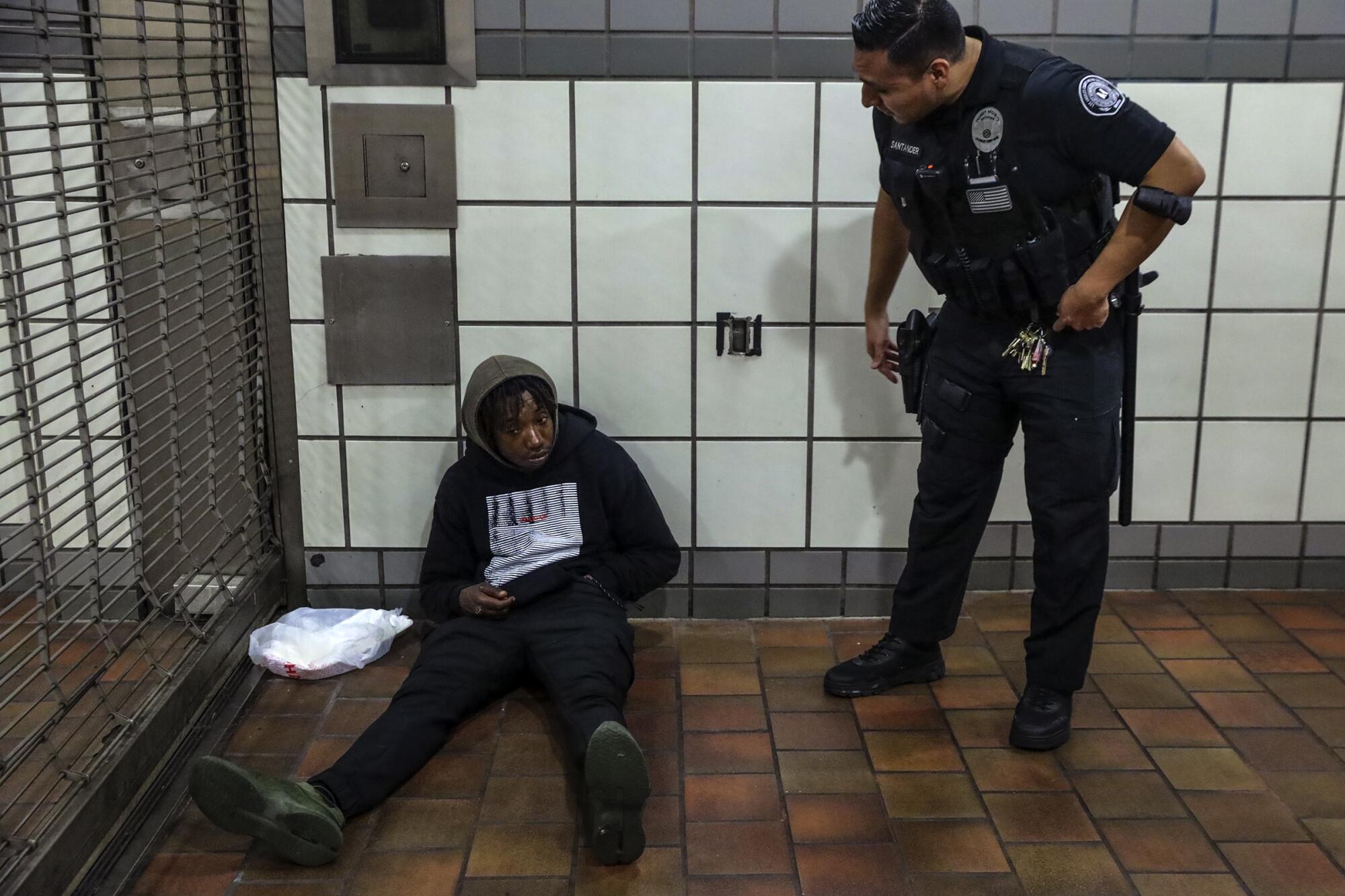
Metro, like many other agencies, has been tapping transportation dollars to pay for homeless services in hopes of luring back commuters.
Last year, Metro Chief Executive Stephanie Wiggins moved homeless strategy from the security and law enforcement department to the executive suite, under the supervision of Senior Director of Special Projects Desarae Jones.
Jones, who has volunteered in feeding, sheltering and aiding homeless groups since she was 10, said the agency will treat people equally regardless of their housing status.
“We were not just asking people to leave our system,” she said. “We are out there saying: ‘We want to help you. We want to help you get housing. We want to help you get home.’ And that’s what Metro’s goal is, to help people get home and to get to the places they need to go.”
But its effectiveness is hard to gauge. Since 2017, social workers have reached about 10,000 homeless people on the Metro system. Only a quarter of those have been placed in housing. In March 2021, the agency began to pay for a shelter operated by Home at Last with social workers trying to register people like Hellams at all hours of the night. But in January, a report from the office of Metro’s chief of staff Nicole Englund found “no meaningful reduction in the number of unhoused observed on Metro’s system.”
At the same time, violent crimes on the system jumped 36% last year, according to Metro data, with aggravated assaults, rapes and homicides rising for the second year in a row. And some high-profile crimes involving homeless people have jolted leaders of Metro.
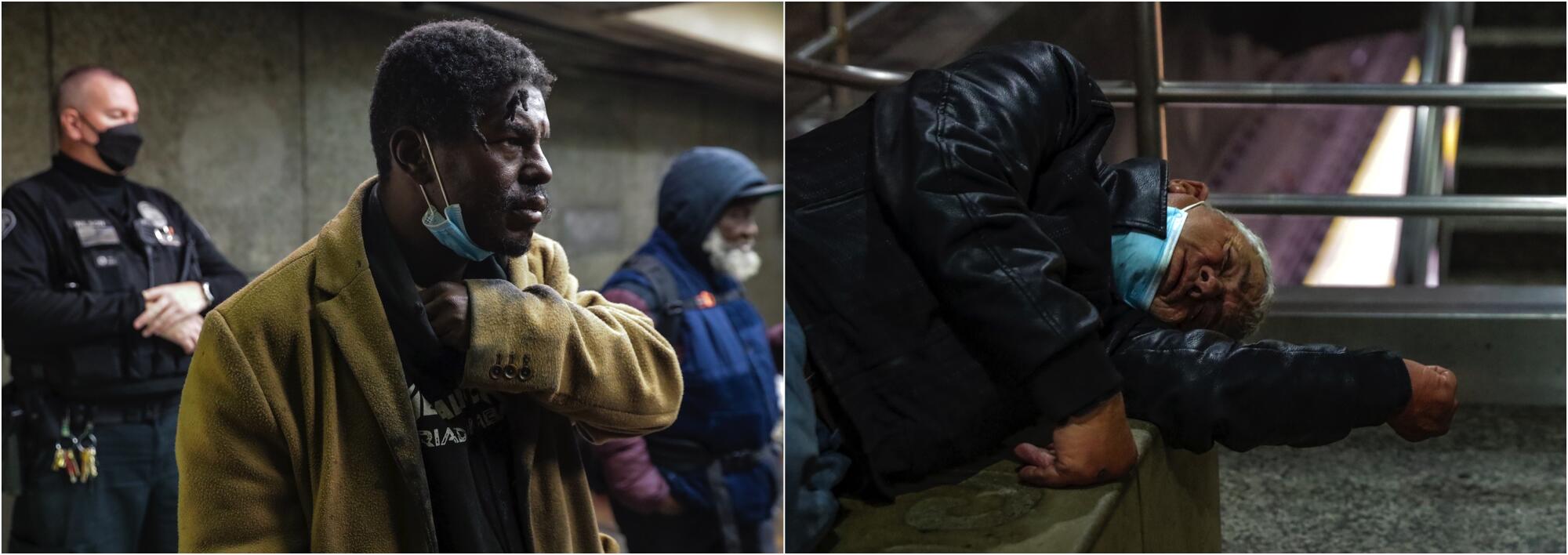
In January, a homeless person with mental health problems attacked Sandra Shells, 70, an emergency room nurse and avid transit user, near a bus stop by Union Station. She was slapped, pushed and fell and hit her head, according to authorities, in an unprovoked attack that killed her.
“The murder of Ms. Shells exposes our shortcomings,” County Supervisor Holly Mitchell, a Metro board member, told her colleagues. “People in cognitive crisis are often ignored and hardly reached. When we finally do make contact, sometimes it’s too little too late.”
Metro officials have closed the historic Union Station, once a 24-hour operation, overnight to stem the wave of people that go there to sleep, curling up in the gardens and hallways.
Supervisor Hilda Solis, a Metro board member who represents the downtown area, pushed forward a measure to increase the agency’s work with the Los Angeles County Department of Mental Health so that crisis teams can respond to reports of people in cognitive distress on the Metro in lieu of armed sheriff’s deputies.
“I think what we’re doing is prioritizing prevention, safety and public awareness and providing those tools,” Solis told the board earlier this year.
In March, a homeless person pushed a man from behind onto the tracks at 7th and Metro. The victim suffered head injuries and fractured ribs. Inglewood Mayor James Butts, a Metro board member and former police chief, said he doesn’t want the crime blown up and painted out of proportion to the actual number of crimes. But he admits these incidents hurt the Metro brand.
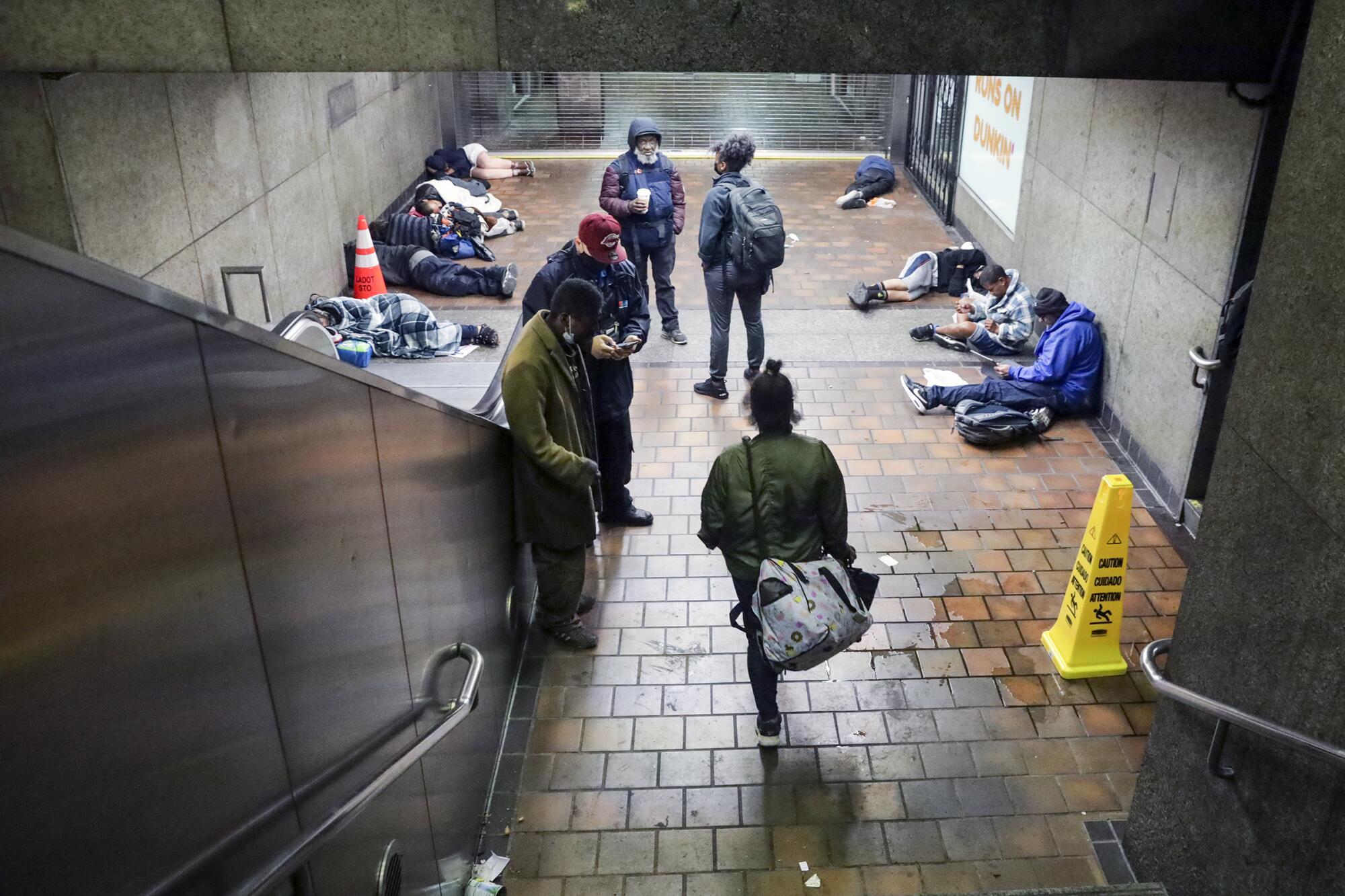
“When these incidents that happen, that are devastating to people and life-threatening, when they are broad brushed as this is a problem with homeless on the system, you’ve lost,” he said.
The agency is now looking for a consultant to come up with a strategic homeless plan. Meanwhile, the board is pushing forward a $40-million initiative called “reimagining public safety” that would add ambassadors aimed at improving riders’ experience, elevator attendants for passengers and an emergency button for riders. And next week, Metro is launching a cleanup campaign at the stations where riders will “be reminded” of common courtesy with posters and fliers.
Around 4 a.m. Hellams walked to the platform where trains that ferry commuters across dozens of miles of the traffic-clogged region from Santa Monica to North Hollywood were arriving. She planned to go to Long Beach. She carried nothing but a plastic bag filled with oatmeal and a sack of sugar.
Before she did, she recited her poem.
“There’s a time when a person loses their self in the crazy world alone without nobody else,” the poem begins.
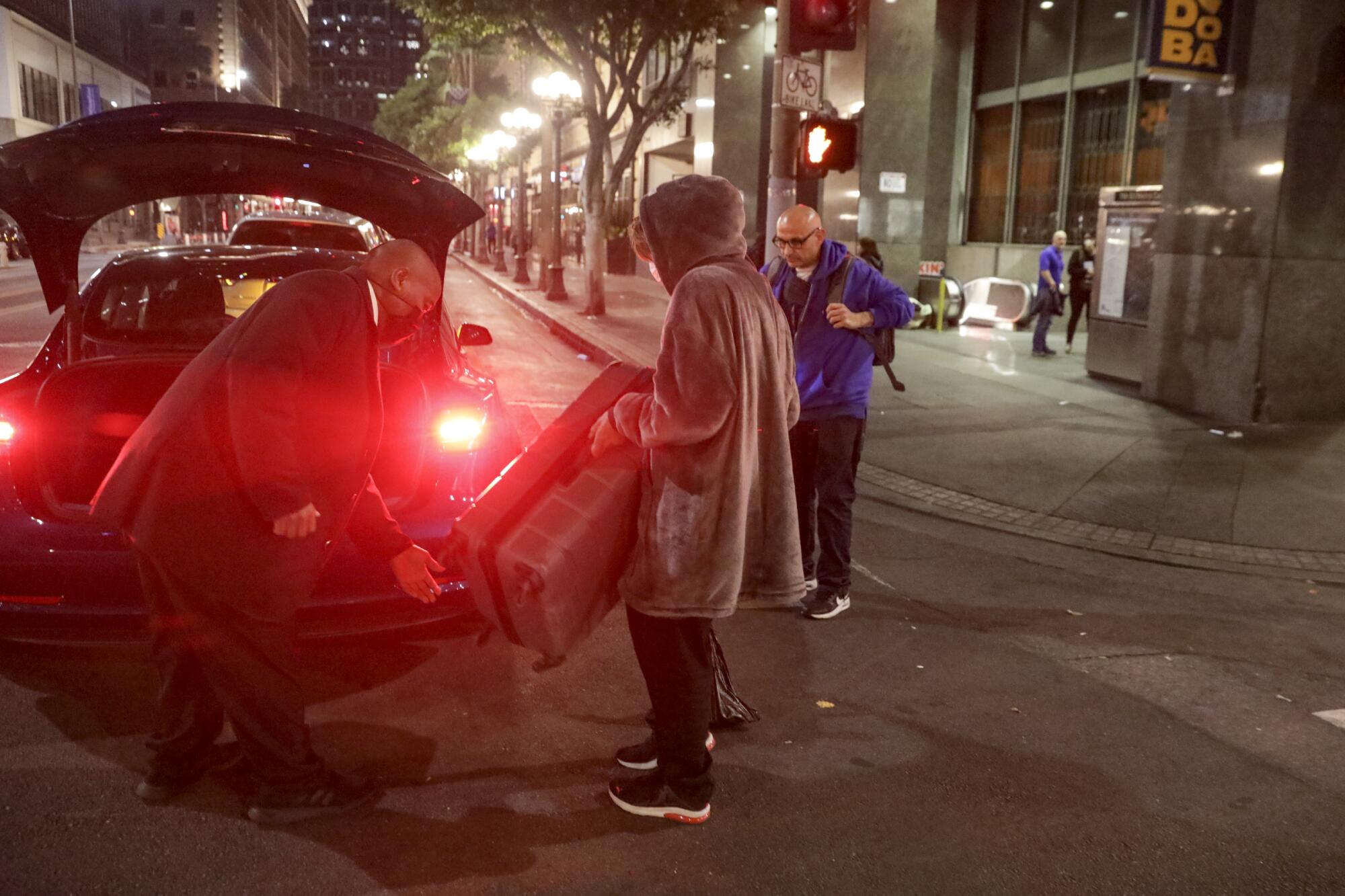
More to Read
Sign up for Essential California
The most important California stories and recommendations in your inbox every morning.
You may occasionally receive promotional content from the Los Angeles Times.

